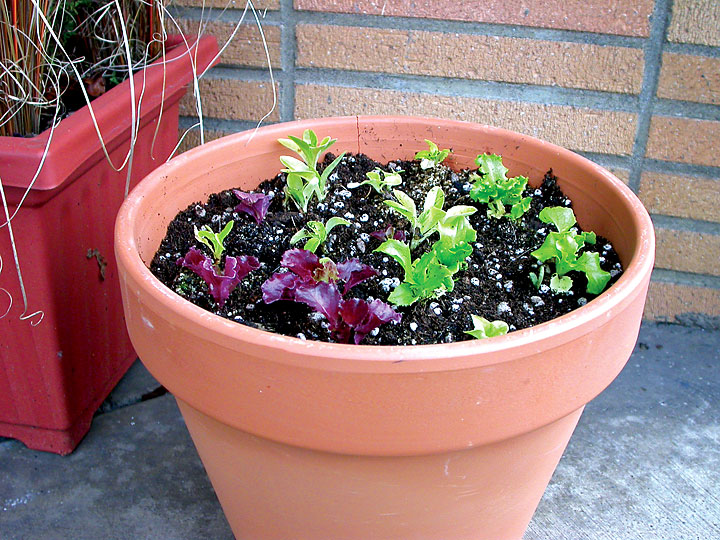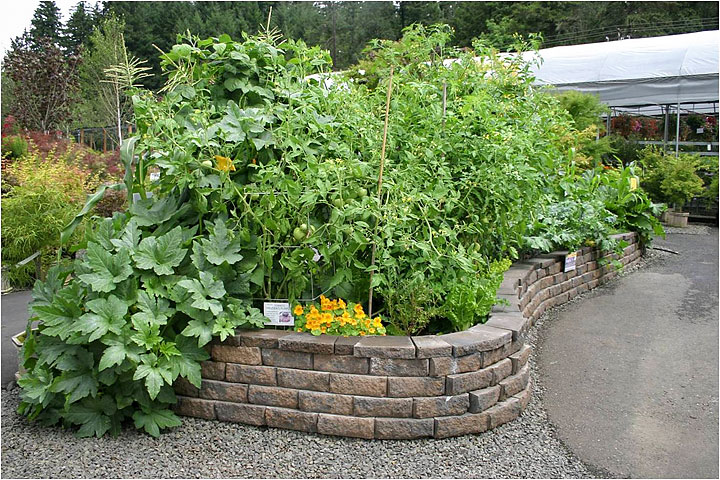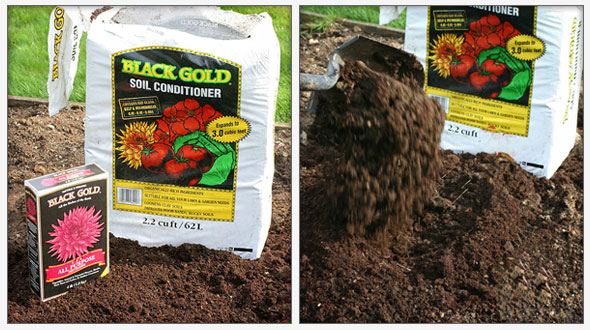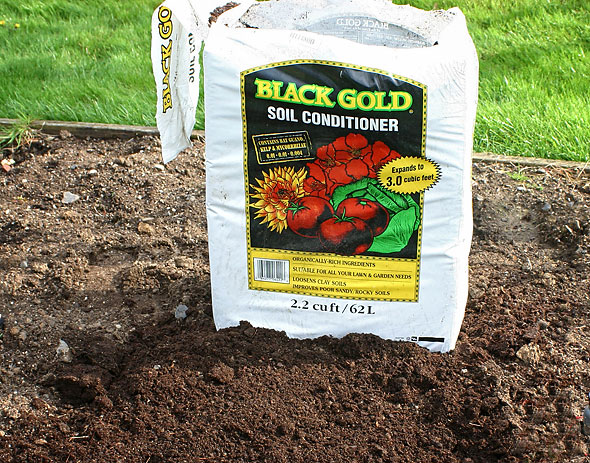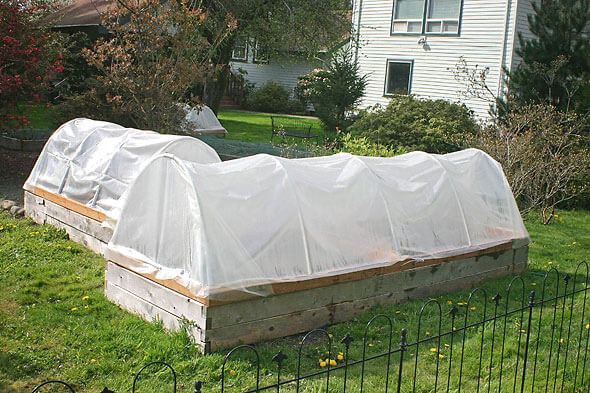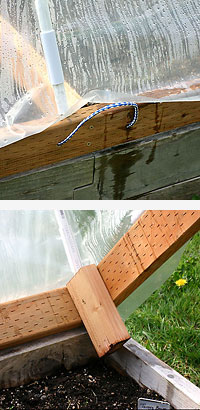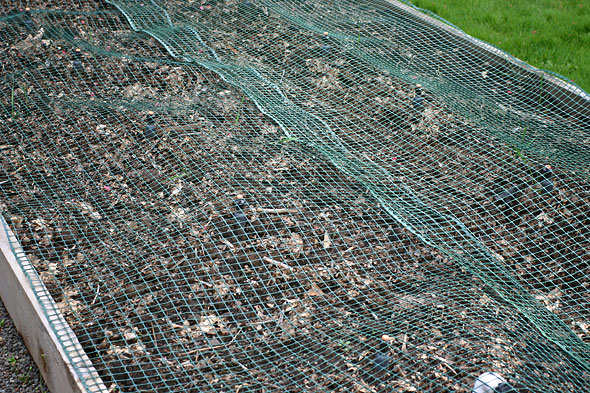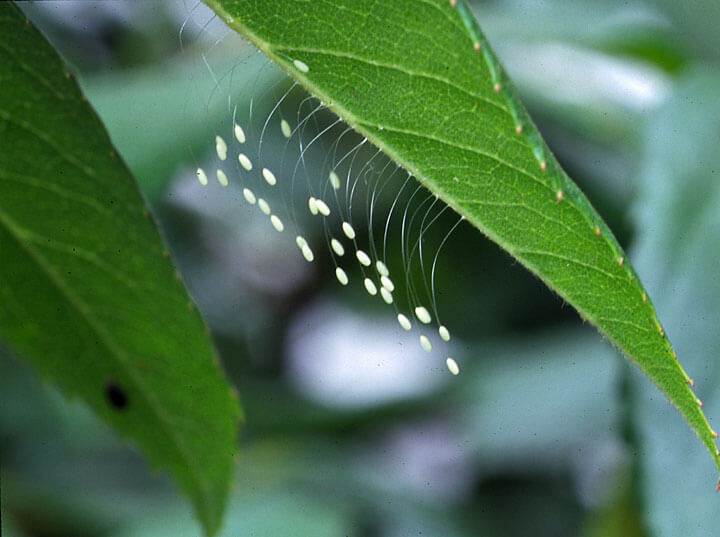
When I am carefully looking at the plants in my garden, I often marvel at what I see and what I would have missed if I had not taken the time for a closer look. The eggs of lacewings are so beautiful and unique and I am always pleased to find them. Often on a stem or leaf, they move with the wind and are quite fragile so avoid trying to touch them. Lacewings are excellent predators of aphids and finding them in a garden is a good thing! All the more reason to enjoy time in the garden.
Tag: Mike Darcy
The Rose ‘Jude the Obscure’
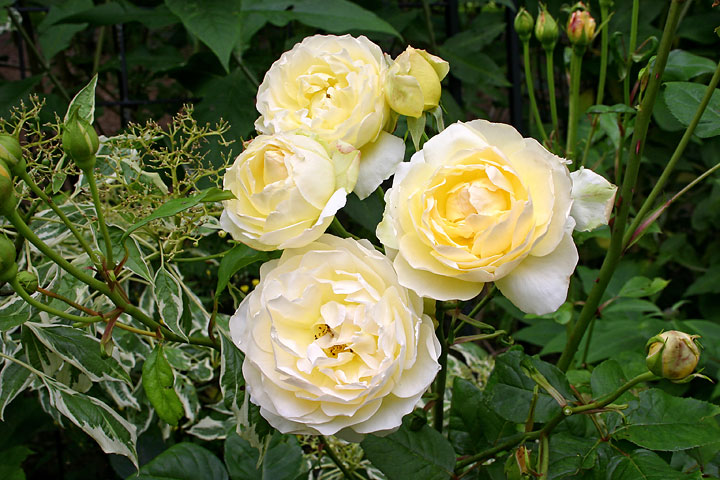
If your city has a public rose garden, this should be an excellent time to visit it. In Portland, we have The International Rose Test Garden in Washington Park and it should be at, or near, peak bloom. It is great to visit a large rose garden and marvel at the diversity of color, flower form, fragrance and bloom size. I can never select a favorite but high on my list is the rose ‘Jude the Obscure’. I first saw a large bed of this at Heirloom Roses in St. Paul, Oregon and liked it immediately. It is a David Austin Rose and has the form of an old fashioned rose, a strong fragrance and is a beautiful soft apricot color. It is an excellent bloomer as well.
All roses grow better with the help of alfalfa meal and a good quality rose fertilizer.
Molly the Witch (Paeonia mlokosewitschii)
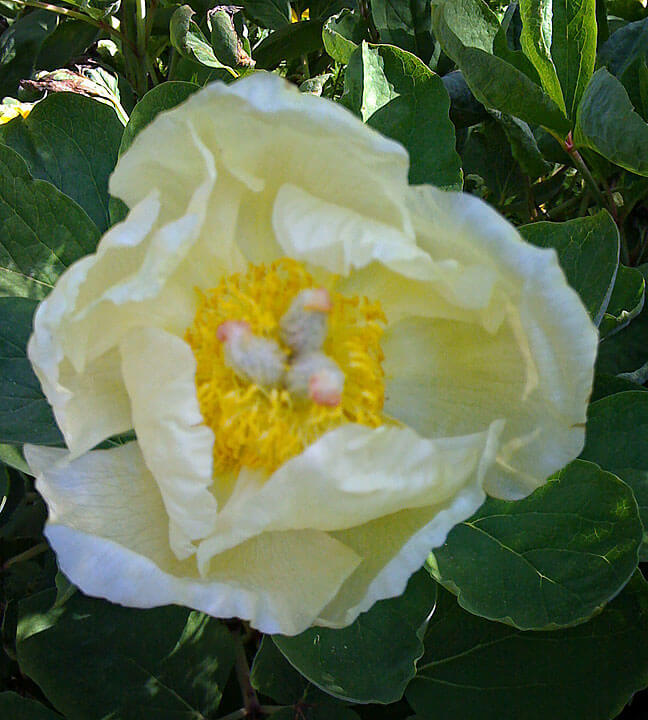
Peonies are a favorite spring flower and I have many in my garden. I have had quite a few people tell me they are a memory flower and reminds them of a parent or grandparent’s garden. For me they bring memories of my grandmother’s garden in Ohio.
A particular early-blooming favorite is Molly the Witch (Paeonia mlokosewitschii) which is the first to bloom in my garden. It is named after a Polish botanist and is a mouthful to pronounce and has the common name of ‘Molly the Witch’. With distinctive foliage and beautiful soft yellow flowers, this may be difficult to find but worth the search.
Starting Seeds Indoors or Out
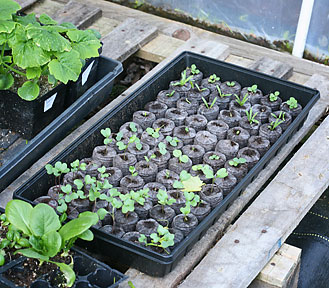
Early spring is the time to begin thinking about a vegetable garden and with the seed catalogs that have been arriving at my house; it is a telling signal that the arrival of spring is not far away. I enjoy seeing and reading about the many new introductions as well as reading about old favorites. Then it’s time to begin starting seeds indoors.
 With the cool weather we often have here in the Pacific Northwest, there are many summer vegetable plants that need to be started indoors from seed and then set out into the garden once warm weather arrives. Starting seeds indoors is quite easy and with a little preparation and planning, many gardeners look forward to this aspect of gardening. If you do not have a sunny window, there are many types of grow lights that can be used in areas that do not get enough natural light. Check out your local garden center or seed catalog for seed trays and peat moss or plastic pots to get started. Often times a special heating pad for plants will help warm up the soil and encourage germination. Starting with good soil is critical and Black Gold Seedling Mix is especially made for starting seeds.
With the cool weather we often have here in the Pacific Northwest, there are many summer vegetable plants that need to be started indoors from seed and then set out into the garden once warm weather arrives. Starting seeds indoors is quite easy and with a little preparation and planning, many gardeners look forward to this aspect of gardening. If you do not have a sunny window, there are many types of grow lights that can be used in areas that do not get enough natural light. Check out your local garden center or seed catalog for seed trays and peat moss or plastic pots to get started. Often times a special heating pad for plants will help warm up the soil and encourage germination. Starting with good soil is critical and Black Gold Seedling Mix is especially made for starting seeds.
Planning your Plantings
When planning what is to be planted, think about what vegetables you most enjoy eating fresh and consider the space and location available for planting. Pumpkins and many squash take lots of ground space as they send their stems out over the ground. Cucumbers are also crawlers but can be trained to grow on a trellis and thus free up ground space. It is interesting what some gardeners think of and how they can be very creative in small space situations. I have seen cucumbers growing in a container on a deck with a trellis for support and lettuce growing at the base. Lettuce is very easy to grow from seed and with its’ different colored leaves, it can make an attractive foliage plant on a deck. Also having a plant close to the kitchen makes it convenient to cut leaves for salad. Sow lettuce seeds directly in a pot and then thin seedling as necessary and set pot outside.
Be Creative
As part of the planning stage for where vegetables might be grown, think outside the box and it might be surprising what spaces you might have available. Several years ago, a local garden center got very creative and made a vegetable garden over what was a gravel parking area. They built a raised bed garden in what was a gravel area and planted it with a wide assortment of vegetables. Last year I saw this same idea used by a homeowner over what had been an unused driveway. This was very creative and produced an abundance of fresh produce. If this idea is feasible for your space, do a rough layout of the produce you want to plant and start seeds from tender summer plants now.
Indoors or Out?
The seeds you select to start indoors should primarily be those that, for a homeowner, are best not directly sown outdoors. Seeds such as beans and corn which are usually sown directly outdoors, can be started indoors and by doing so you will have a head start on their growth when you transplant them outdoors.
When seeds germinate and the new leaves appear, they are at one of their most vulnerable stages. Make sure they have adequate light so they do not become ‘leggy’ and be sure to give them sufficient moisture. In Pacific Northwest gardens, slugs can be a major pest and are attracted to the tender new leaves of many plants. Seedlings will likely be damaged by slugs if some kind of bait is not applied when plants are set outdoors.
Tomatoes from Seed
The most popular of all home grown produce is the tomato. There are so many different varieties to choose from, it can be overwhelming. I always suggest looking at the name tag of the plant and there should be an indication of the length of days to maturity. Select an assortment, early, mid-season, and late to extend your harvest. The early and mid-season types are more reliable if we have a cool fall season, many of the later maturing tomatoes will not ripen. Check with neighbors and see which varieties perform best for them and then, of course, try some new ones.
Tomatoes should be started indoors and a good indication of when to start the seeds is about six weeks before it is time to set plants outdoors. Use Black Gold Seedling Mix and just barely cover the seed. Keep the soil moist and the use of a heating pad is advisable.
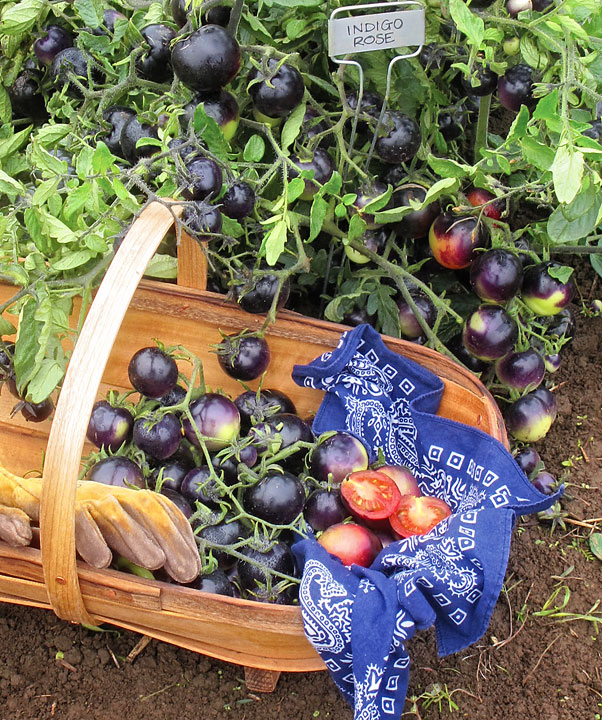
As gardeners are always on the lookout for something new, a tomato that has recently be introduced called Indigo Rose would be one to try. It was developed by Oregon State University and so has been bred for our area. It is very high in anthocyanin (a naturally occurring pigment that has been shown to help fight certain diseases in humans) and this anthocyanin creates what is almost a blue skin tomato. The inside flesh is the same rouge tone we expect and the flavor is excellent. The fruits are about 2-inch round, are very prolific and remind me of clusters of purple plums.
Do not be intimidated by starting seeds. You will have a much wider of a selection of varieties to chose from and have the enjoyment of knowing you started your own plants. I always like to mention that getting children in a seed starting project is an excellent way to introduce them to gardening. A seed that I find works especially well is nasturtium. It is a large seed, germinates quickly, grows fast and all parts of the plant are edible.
Soil Preparation and Bed Protection
In previous articles, I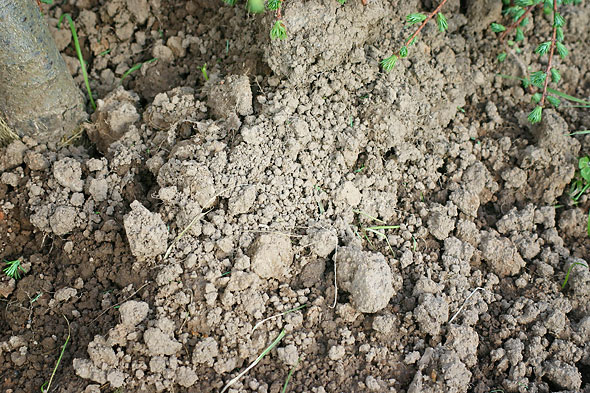 have mentioned the importance of soil preparation before setting out transplants or sowing directly from seed. Prior to planting is the one opportunity to thoroughly prepare the soil. How you amend the soil now is the way it will be for the balance of the season.
have mentioned the importance of soil preparation before setting out transplants or sowing directly from seed. Prior to planting is the one opportunity to thoroughly prepare the soil. How you amend the soil now is the way it will be for the balance of the season.
Many soils in our area, without preparation, will look like the soil you see in the photo on the left. This is the kind of soil that quickly dries out in the summer and can often make a crust over the existing soil and will prevent water from penetrating and causing plants to stress. Sometimes in my garden, I have seen plants wilting in the summer sun and yet I had recently watered them. Upon further observation and some digging around the plant with a trowel, I discover that below the crusty surface the soil is dry.
With the addition of Black Gold Soil Conditioner, it is amazing how quickly the soil can change for the better. I like to spread soil conditioner over the top of the soil and then mix it in with the existing garden soil. If there are large clumps of soil, I try to break them into smaller pieces and work them into the mix, always watching for rocks which I remove. This is a very simple process and as long as the soil is not too wet, it is easy to mix soil and compost or mulch. With our cold and wet spring, many soils are too wet early to adequately dig early in the season, but I have found that after just a few days of sunny weather the soil will become dry enough to cultivate.
I like to have a box of fertilizer close at hand and work this into the soil along with the soil conditioner. A high-performing organic fertilizer formulated for general gardening is your best choice. Incorporate it into the soil before planting.
To get a head start on planting, many gardeners will make or buy a miniature hoop house. This is simply a structure to get the soil warm sooner and provide some protection from the elements. Often gardeners will build a hoop house over a raised bed as the following photos show. The hoop house shown below in this Portland, Oregon garden, has allowed this gardener to start his season earlier in the spring and extend it longer into the fall. The soil preparation is the same as was mentioned earlier. If you are going to sow seeds directly into the ground, the protection a simple hoop house will provide, in many cases, will give you greater success. Even if you are going to use the hoop house to start seeds in flats or small pots, you will have quicker germination and the plants will continue to grow faster than if they were outside with no protection.
With just this plastic protection, it is surprising how much warmer the soil will be and how quickly seeds germinate. In fact, quite often on sunny days, the cover will need to be removed as the temperatures inside will become too hot. An easy way to do this is make a handle to lift the structure. Being able to either open or remove the top is necessary not only to keep the inside from getting too hot but also to provide some air circulation.
To prevent the top from sliding off the sides of the raised beds, this gardener came up with a clever idea. He made two elongated corner braces so the top could be easily lifted and yet would not slide off.
If you are going to sow seeds directly in the ground, it is sometimes beneficial to place something over the top of the soil to discourage birds and squirrels from eating young tender plants. This gardener used this heavy plastic mesh (see photo below), chicken wire also works well.
Here in the Pacific Northwest, slugs can be a huge problem and it is advisable to use some kind of bait or barrier to protect new germinating plants or transplants.
Once your soil is prepped, you are ready. For a novice or first time gardener, if you are going to sow seeds directly into the soil, I would suggest starting your first year with some of those seeds that are relatively easy to germinate. Early spring try seeds like peas, lettuce, kale, radish, and chard. Once summer is here and temperatures are warm, beans, squash, pumpkins, lettuce, and corn are often directly sown in the garden.
It is not difficult to prepare your soil and, with a little bit of work early in the season, your plants will thank you throughout the growing season for your extra effort.
All photos courtesy of Rich Baer.
Sticks On Fire
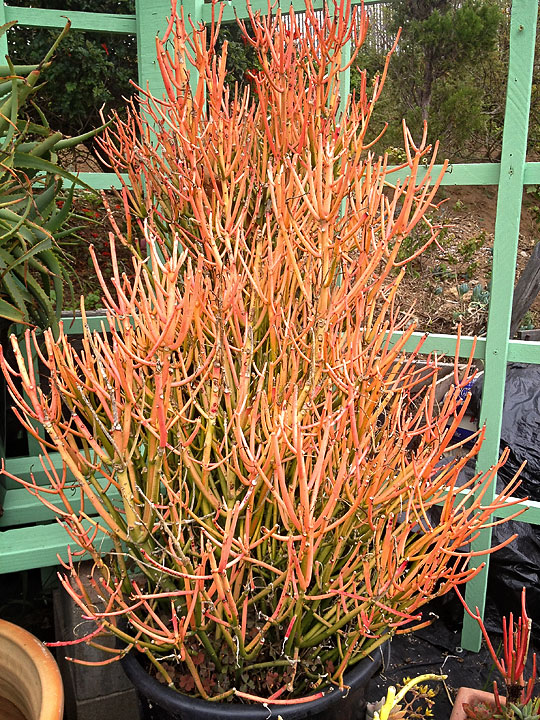
Even though it is not winter hardy in most of our Pacific NW climate, for a novelty container plant, it is hard to top the color of Euphorbia tirucalli. This often goes by the common name of Red Pencil Tree, Firesticks, or Sticks on Fire and when you see the plant, you will know why it has those names. Stems tend to be red in winter and fade to copper in summer. It is an excellent container plant for a deck or patio. It needs good drainage, and I use Black Gold Cactus Mix and mentally consider it a summer annual and then I am not disappointed when it does not survive the winter!
Rhododendron Yaku Angel
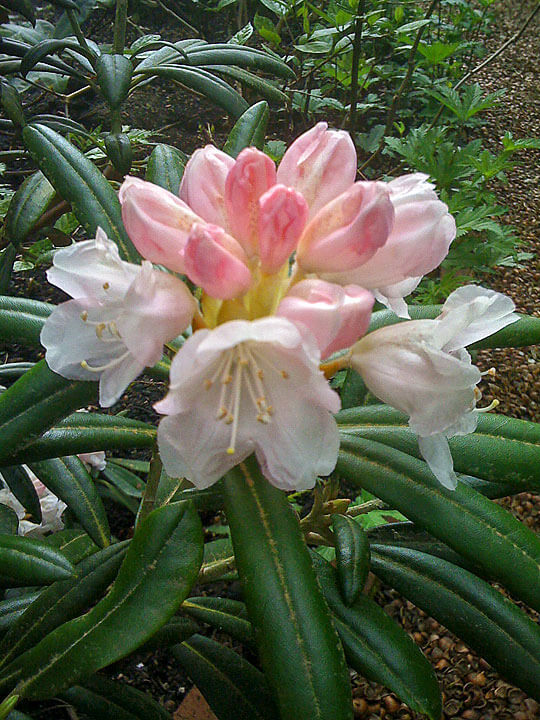
Living in the Pacific Northwest, we have an abundance of rhododendrons to provide spring color. While there are many hybrids to chose from, one of my favorites is a species called Rhododendron yakushimanum ‘Yaku Angel’. This has wonderful white, felt-like new growth and soft brown indumentum (under surface of leaves) with a velvet-like touch. The flowers are a light pink in bud and open to white. This is a beautiful shrub in the garden at any season, whether in bloom or not.
Rhododendrons like a moist soil and using Black Gold Garden Compost Blend is ideal. Fertilize now with fertilizer formulated for acid-loving plants. The photo is from a plant in my garden taken in late April. Rhododendron Yaku Angel
Gunnera in Early Spring
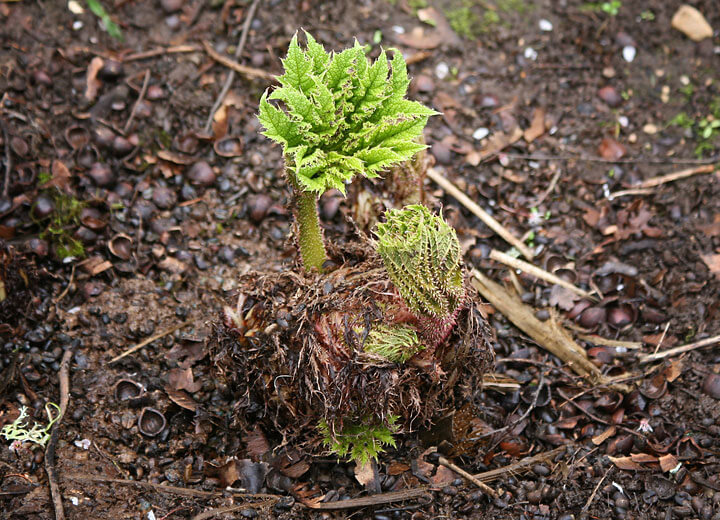
Spring has finally arrived and we are having sunny days and warm weather. It has been a long time coming. It is exciting to walk around the garden and see what new plants are showing growth. This picture of a Gunnera in my garden is showing new growth. It is obvious that I need to amend the soil and that will be done soon. Gunnera likes a moist soil, wet but not standing water. I will soon work Black Gold Garden Compost Blend into the upper several inches of soil as well as some OMRI Listed general purpose fertilizer.
Preparing the Soil Before Transplanting Seedlings
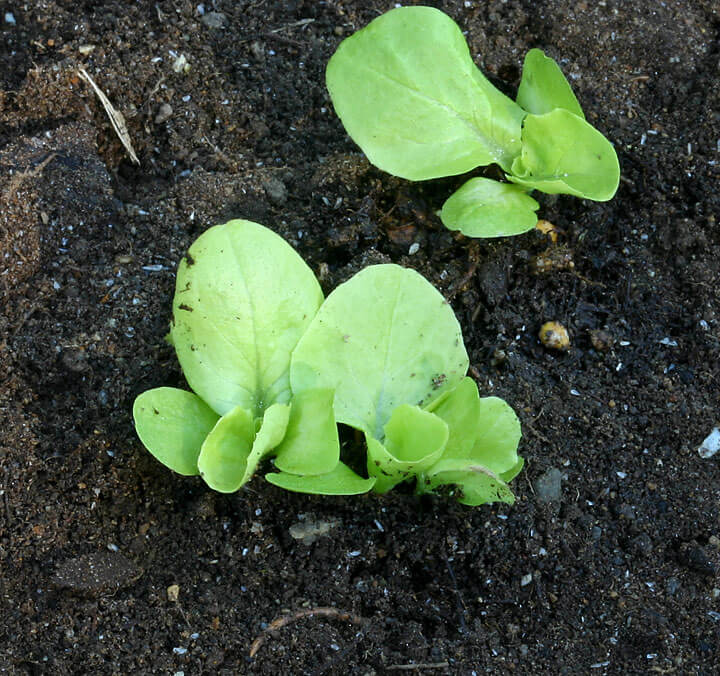
One of the most important tasks of getting the garden ready for transplanting seedlings is preparing the soil. Whether you will be setting out small transplants or planting seeds directly into the garden, the soil is something that needs to be prepared prior to planting. In my own garden, I use Black Gold Garden Soil and work it into the soil before planting or seeding. The photo shown is lettuce that has been planted in a soil that has been amended using this simple process and Soil Conditioner. This lettuce should grow and thrive in the healthy soil.
March 9th, 2012 – KXL 11th Annual Plant Nerd Night

The 11th Annual KXL Plant Nerd Night was a huge success!
Since the beginning, 11 years ago, Black Gold has been a sponsor. This event heralds spring and brought out over 600 avid gardeners, some arriving nearly three hours before the doors opened. Those early birds brought their own chairs and coffee and had a good time visiting with others as they waited in line.
Continue reading “March 9th, 2012 – KXL 11th Annual Plant Nerd Night”


